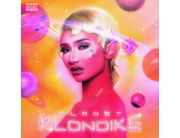Clothing technology describes advances in production methods, material developments, and the incorporation of smart technologies into clothes. The clothing industry has expanded throughout time, reflecting advances not just in apparel manufacturing and distribution, but also in textile functionality and environmental effect. The timeline of clothing and textiles technology includes major changes in the manufacture and distribution of clothing.
From clothing in the ancient world into modernity, the use of technology has dramatically influenced clothing and fashion in the modern age. Industrialization brought changes in the manufacture of goods. In many nations, homemade goods crafted by hand have largely been replaced by factory produced goods on assembly lines purchased in a consumer culture. Innovations include man-made materials such as polyester, nylon, and vinyl as well as features like zippers and velcro. The advent of advanced electronics has resulted in wearable technology being developed and popularized since the 1980s.
Design is an important part of the industry beyond utilitarian concerns and the fashion and glamour industries have developed in relation to clothing marketing and retail. Environmental and human rights issues have also become considerations for clothing and spurred the promotion and use of some natural materials such as bamboo that are considered environmentally friendly.
The advent of industrialization included factories, specialized and technologically advanced equipment, and production lines for the mass production of textiles like natural and synthetic fibers. Globalization and advances in trade increased sourcing of materials and competition for wares across borders. The swadeshi movement in India was an effort to counteract the economic control and influence that British factories exerted over the one-time colony. Concerns have also been raised over the use of so-called sweat shops.
Clothing lines based on famous designers have been featured and advertised in magazines and other media. Branding and marketing are features of the advertising age. Some designers have also become television and media personalities. In recent years fashion and design has also been the subject of television shows.The media and various social networking platforms heavily influence clothing production. Complex software is used to go through and analyze important data related to production and consumerism. This process needs to be done quickly and efficiently in order for companies to meet customer demand thus enhancing their profit and brand.
Computer-aided design is used in the development of clothing. Corporate and business training to address accounting, trade, and finance issues has also become a significant part of the trade. Courses and programs at Universities specialize in these fields. The Beijing Institute of Clothing Technology and Fachhochschule für Technik und Wirtschaft Berlin are examples institutions focused on the business. In the area of engineering development of functional clothing, TU Dresden, Germany provides courses at Bachelor, Dipl.-Ing and non-consecutive MSc. degree and HS Niedererrhein (Mönchengladbach) provides B.Sc. and M.Sc. programs.
National governments have also become involved in the business with trade rules and negotiations as well as investments such as Europe’s Future Textiles and Clothing program.
Photo Credit: Thor Creations







Add Comment